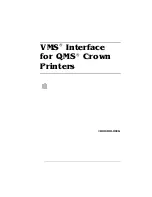
T01NVLOCK0,yumyum
Attempt to unlock the non-volatile
memory by using an invalid
password.
T01ERROR#005
-- since an invalid
password was given, an error message
was generated. If error messages have
been disabled (via the
ERROR
command),
then no status message will be generated.
T01NVLOCK0,aspi
Unlock the non-volatile memory
by using the correct password.
T01NVLOCK0
T01NVLOCK?
Query the locked status of the
non-volatile memory.
T01NVLOCKx
, where
x
is
0
or
1
depending on whether the non-volatile
memory is unlocked or locked,
respectively.
8.77.
NVPSWD
-- Change Non-Volatile Memory Password
This command sets or queries the non-volatile memory password. This password is used in conjunction
with the
NVLOCK
command. The non-volatile memory must be unlocked ('
NVLOCK0
') in order to use
this command to set or query the non-volatile memory password. If the non-volatile memory is locked,
then this command will result in '
ERROR#004
'. The examples below assume that the non-volatile
memory is unlocked.
Example
Description
Status Message
T01NVPSWDlemur
Set non-volatile memory password to '
lemur
'.
T01NVPSWDlemur
T01NVPSWD?
Query the current non-volatile memory password.
T01NVPSWDlemur
8.78.
PEQIA
-- Set All Parameters for Specified Parametric
EQ Input Stage
This command sets or queries all of the parameters for the parametric equalizer (EQ) filters on . Each
channel has five bands of parametric EQ that can be independently controlled.
The input parametric EQ filter parameters can be set individually via the
PEQIT
,
PEQIF
,
PEQIB
,
PEQIG
,
PEQIS
, and
PEQIE
commands. The output parametric EQ filter parameters can be set
simultaneously via the
PEQOA
command or individually with the
PEQOT
,
PEQOF
,
PEQOB
,
PEQOG
,
PEQOS
, and
PEQOE
commands.
When using this command, you must specify all of the following parameters.
Description Value Range
Units
Channel
T
N/A
Band
1-5
N/A
















































